Field Guide: Teachers
As a teacher, you already have so much on your plate. Basecamp is here to help you make your work life easier!
In this guide, you’ll find a couple of examples of how you can use Basecamp in your classroom.
Jump to:
- Projects
- Message Board
- To-dos
- Docs & Files
- External Doors
- Chat
- Schedule
- Card Table
- Email Forwards
- Automatic Check-ins
- Templates
- Boosts
- Adding students
Projects
Each project can be customized to fit your needs. Some projects you’ll want to use with your students and some you’ll want for your eyes only.
Here’s an example of a project you’d use with your students:

And here’s one you’d likely want to keep private from your students 🫣:
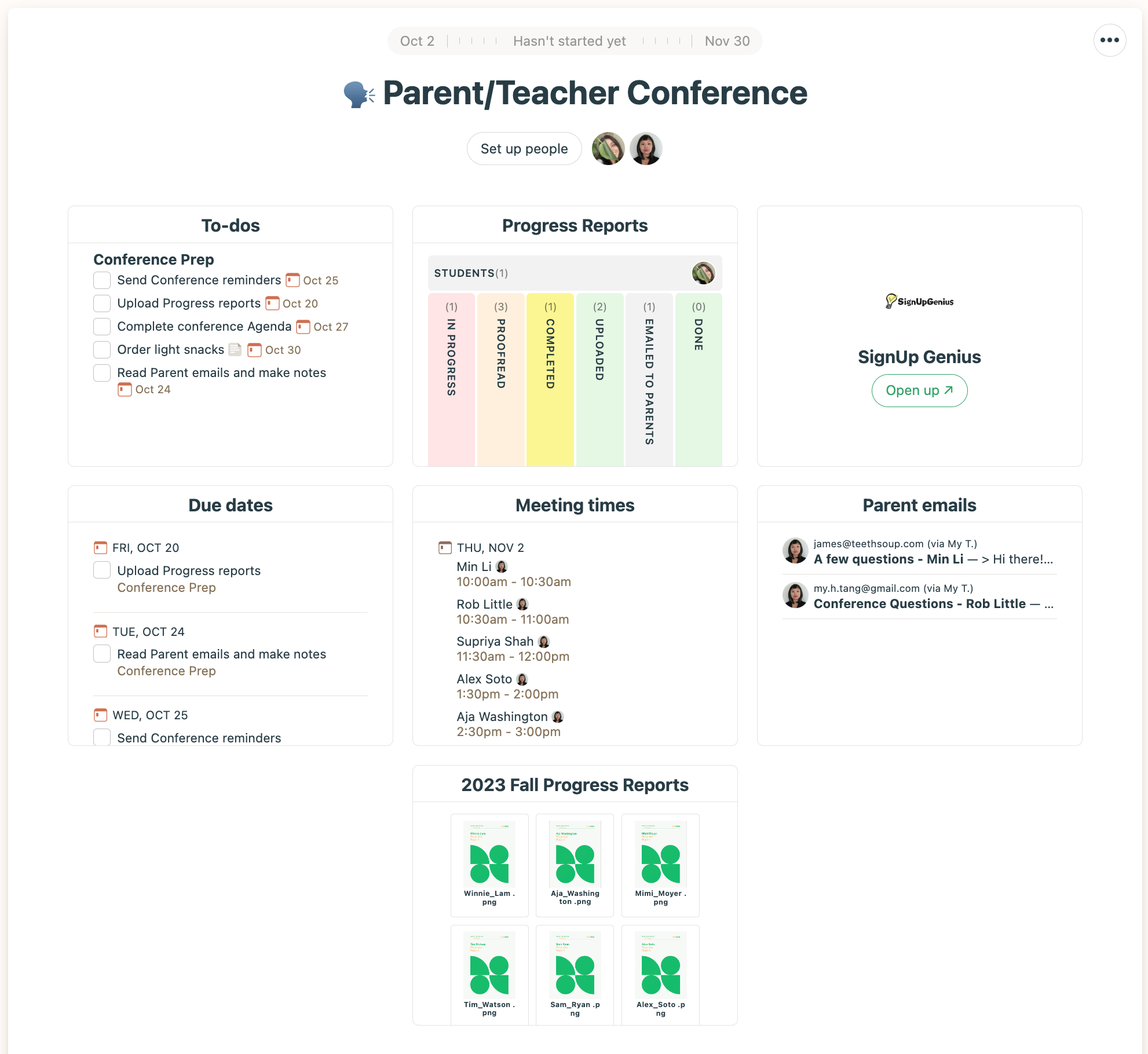
Both projects are set up a bit differently, so let’s zoom in to learn more about the project tools used in each example.
Message Board
The Message Board is a great tool to use when you’re working with your students. This is where you’ll want to post announcements or any important information you’d like your students to know.
In the AP Psych | 2pm project, you’ll see that we’ve renamed the Message Board tool “Announcements.” The first message posted is to welcome the students and to give them a quick overview of the Basecamp project itself:
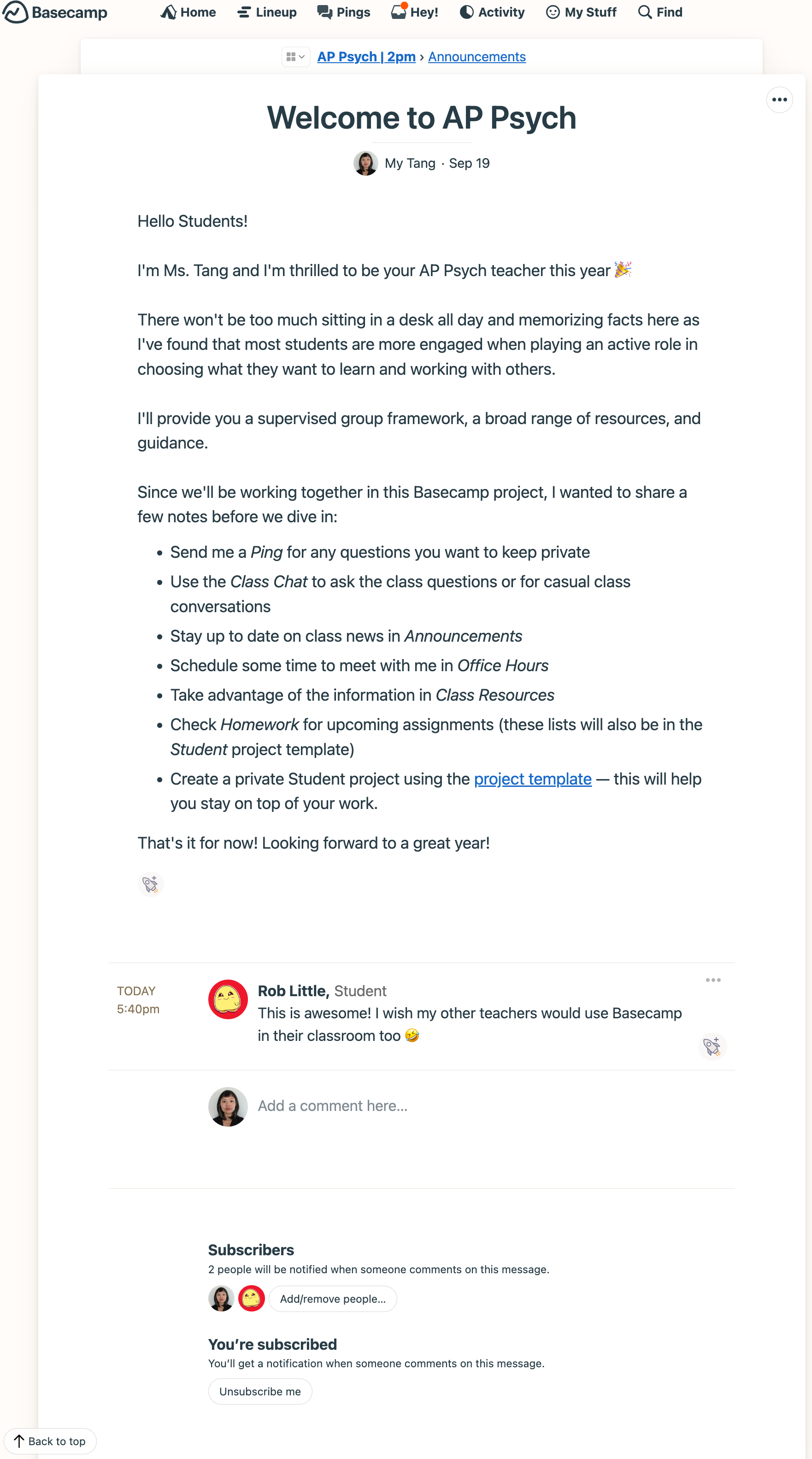
Students can also leave comments below the message. Hey, Rob Little! Let your other teachers know they can sign up for an account too 😏
To-dos
We all have lists of things that need to get done, which is why many projects will have the To-do tool turned on. To-do lists can be used in a variety of ways.
In the AP Psych | 2pm project, we’ve renamed the To-do tool to “Homework.” Students won’t be marking any of these as completed here, but they can see what will be expected and they can also copy the to-do lists to their own project within the account (if they’ve created one!).

The 🗣 Parent/Teacher Conference project has to-dos that you’ll likely be marking as complete — it’ll feel good to see a list of checkmarks!

🔥 Hot Tip: Visualize your to-dos with Hill Charts 👀
Docs & Files
We’ve renamed the Docs & Files tool “Class resources” in the AP Psych | 2pm project. This is where you can upload files, embed videos, or create documents that will be useful for your students.

In the 🗣 Parent/Teacher Conference project, we’ve used the Docs & Files tool to store student progress reports. You can also create and send a link to parents so they can quickly download their child’s progress report. The trees will thank you.

External Doors
Sometimes, you’ll need to access another service that’s related to the project. When that’s the case, you’ll want to add a Door to your project.
Both project examples have Doors that open to different services — one for students to access a presentation created in Google Slides and one for you to see which parents have signed up for the parent/teacher conference.
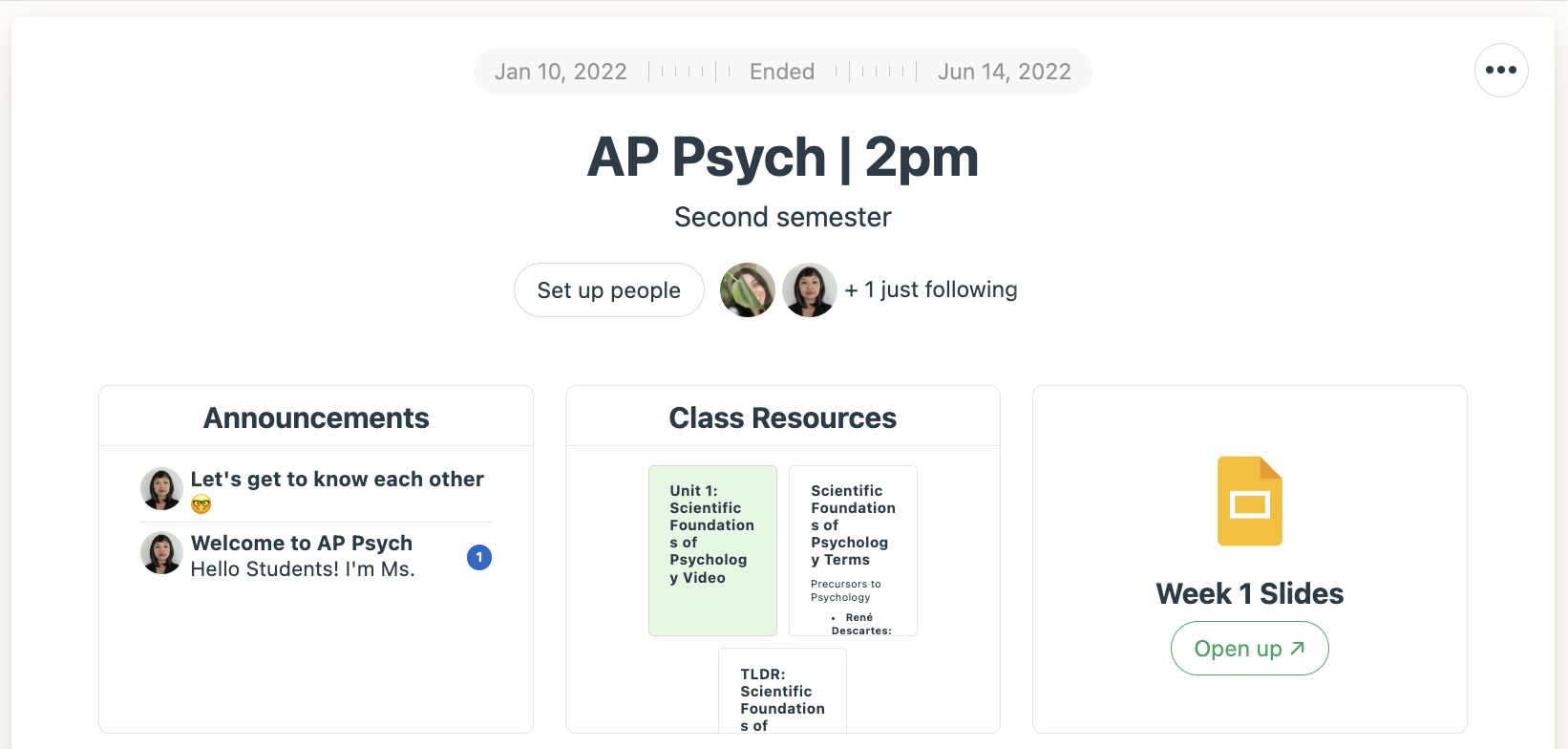

Chat
The Chat is another tool you’ll use in a project with your students and not so much in a solo project (unless you want to have a conversation with yourself, no judgment here!).

Schedule
The Schedule tool will pull all dated assignments in the project, and you’ll have the option to also add events. You can even set it up so that you have two Schedules in a project — one for just dated assignments and another that shows only events.
In both project examples, we’ve renamed one Schedule “Due Dates” for dated assignments. In the AP Psych | 2pm project, we’ve added an ‘Office Hours’ Schedule so students can add a time to meet with the teacher.

In the 🗣 Parent/Teacher Conference project, we’ve added a “Meeting times” Schedule. At a glance, I can see that November 2nd will be a super busy day!

Card Table
The Card Table will be super handy for any work that moves through stages. We don’t have this tool turned on in the project with students, but it’s pretty helpful in the 🗣 Parent/Teacher Conference project.
Remember the progress reports we uploaded to the Docs & Files tool? Well, the Card Table helped us make sure they were created, uploaded, and sent to the parents. Looks like we still have some work to do 💻
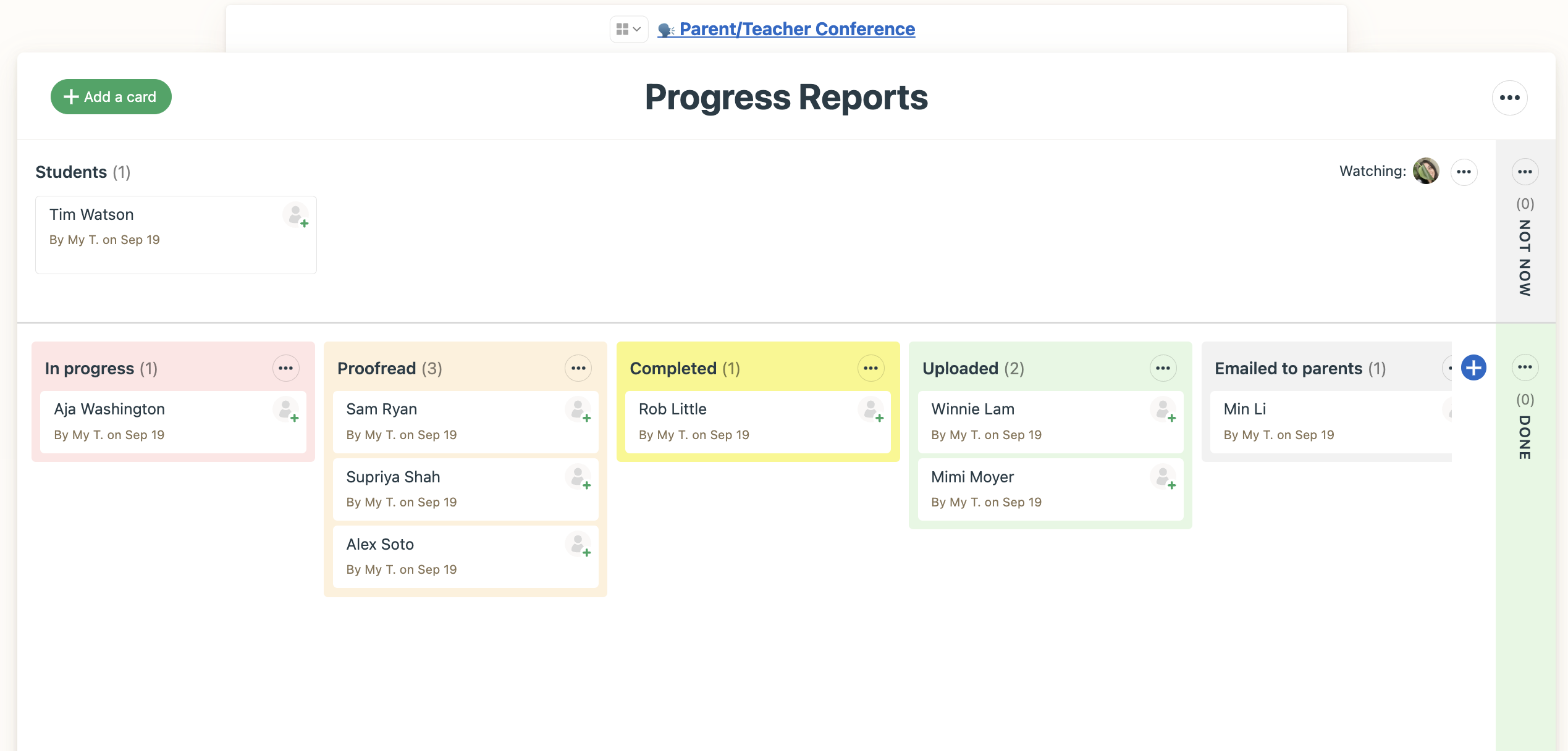
Email Forwards
Received an email that’s relevant to a project? Turn the Email Forwards tool on and forward it right into Basecamp.
We’ve turned it on in the 🗣 Parent/Teacher Conference project so we can forward emails from parents regarding the upcoming conference.

Automatic Check-ins
Automatic Check-Ins is another tool best suited for projects you’re using with your students.
We've used one here to see if any students need clarification. All students can see these answers and as a teacher, you may find some patterns that'll be helpful when planning on next year's lessons.

Now that we've gone over how to use Basecamp project tools, here are some other must-know tips that'll help you get the most out of Basecamp ✨
Templates
Templates are perfect for projects you'd use over and over again — like the project examples above! If you created a project and realized you'll use again, just turn that project in to a template!
Another idea would be to create a template for students. This way, they can quickly create their own project from the template and it'll have all the items that'll set them up for success.
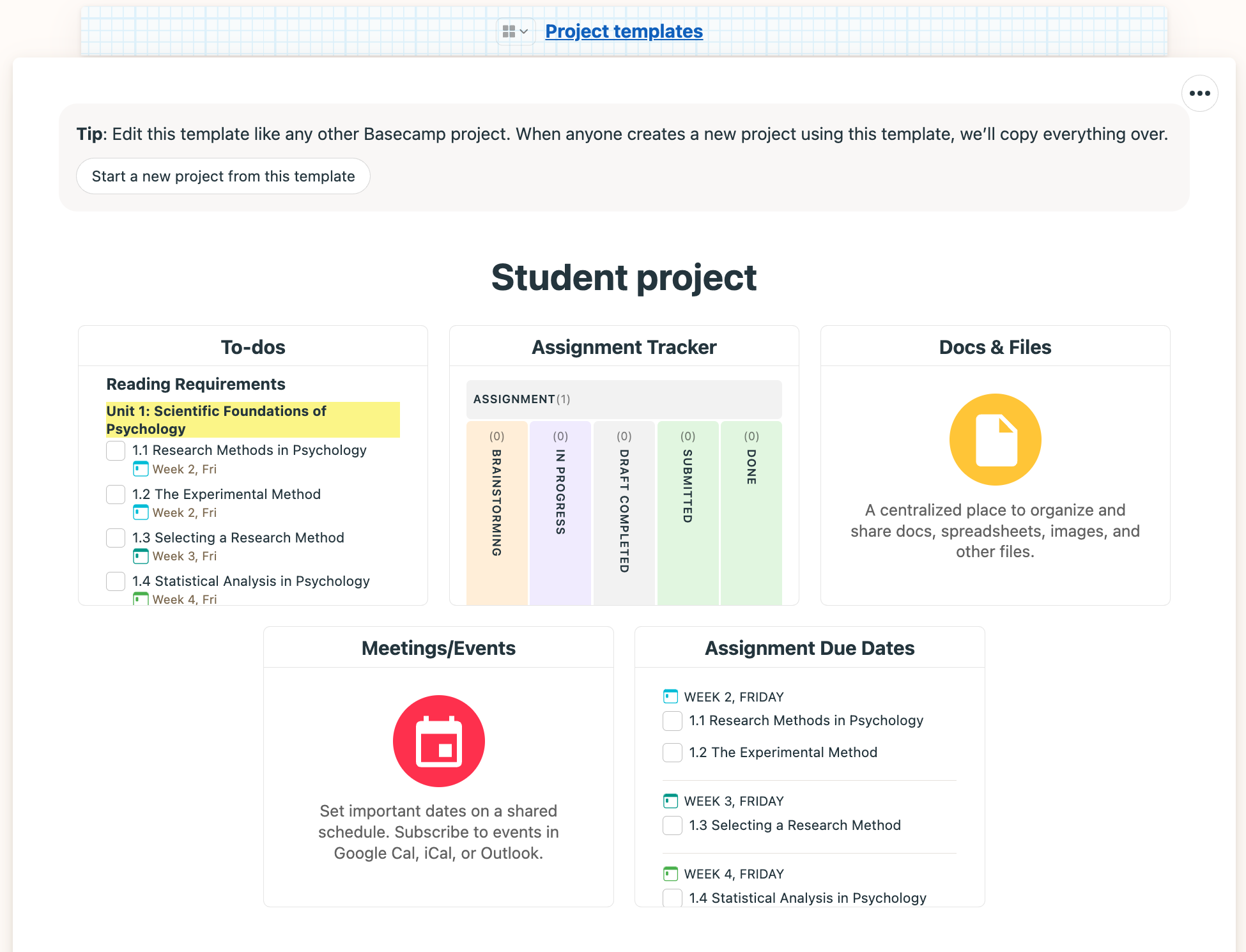
🔥 Hot Tip: You can save even more time by creating templates for your to-do lists.
Boosts
Boosts are a great way to engage students. You can ask them to boost what you’ve posted to tell you that they’ve read and understood something. Sometimes you need a quick opinion instead of a bunch of comments. Boosts fit that need perfectly.
Here’s an example of how the Fist to Five method — just one technique for quickly getting feedback or gauging consensus — can be used in Basecamp:
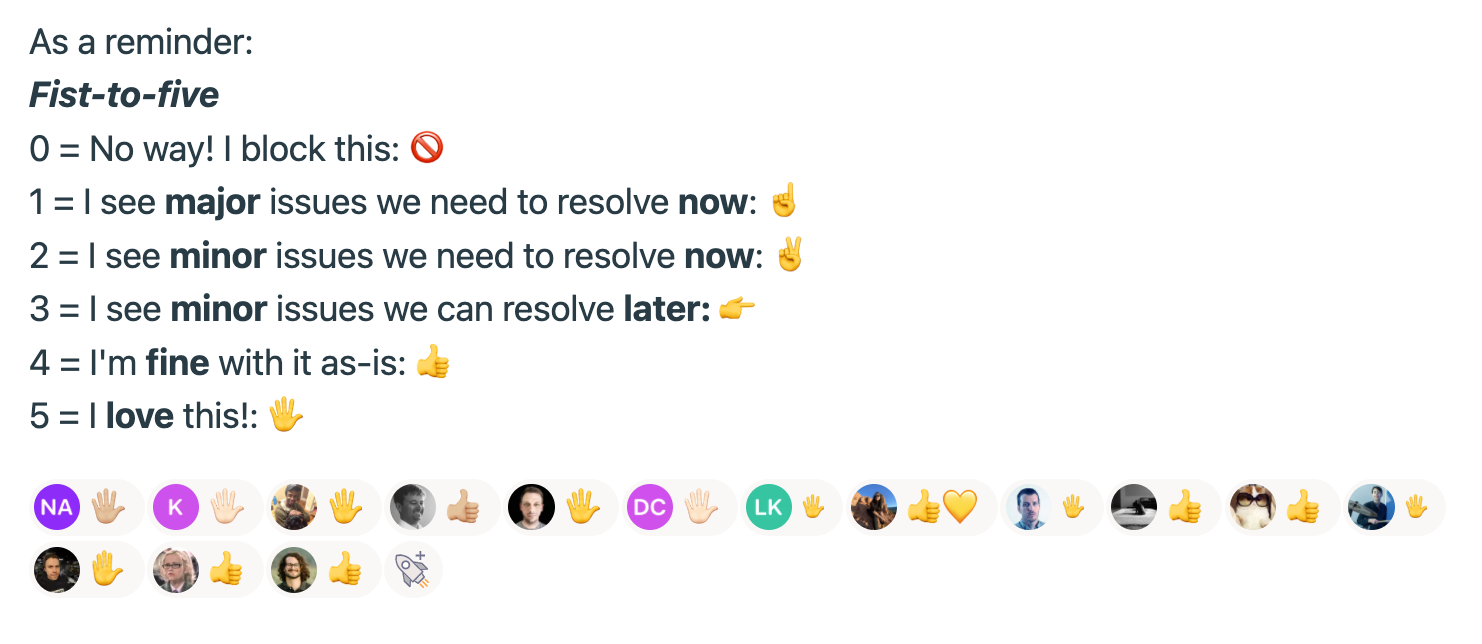
And here’s an example of how you can ask students to use an emoji to demonstrate comprehension and read receipt:

🔥 Hot Tip: To choose from the full menu of emoji, click control + command + space bar on a Mac to pull up the emoji picker. On Windows 10, click the Windows key + ; to pull up emoji. (Older versions of Windows will work too!)
Adding students
After you've set up your projects in Basecamp, it's time to add your students!
Students will only be able to see the projects they are invited you and the ones they create.
There are a few other things you may want to note when adding students:
- If you don’t want students to create projects in your account, consider adding them as a client. Within a project, they’ll only be able to see what you want them to see. More on that here.
- You can always change your students' user types from client to non-client and vice versa. You'll just follow this guide.
- Students can always send Pings to anyone they share a project with. It’s not currently possible to turn this feature off, but another warning would go a long way with students — you can export their conversations and read them entirely at any time. They should stick to their truly private channels to talk with friends, or use the Chat within their Basecamp project to talk to their peers about the work.
🛑 Working with minors. We take the privacy of your data very seriously. We don’t ever sell it and we don’t put ads in our product. Read the Customer Bill of Rights here and our Privacy Policy here.
That's it for now! We hope this guide helps your work as an educator a bit easier. And if you need any assistance, just send us an email. Happy Basecamping!